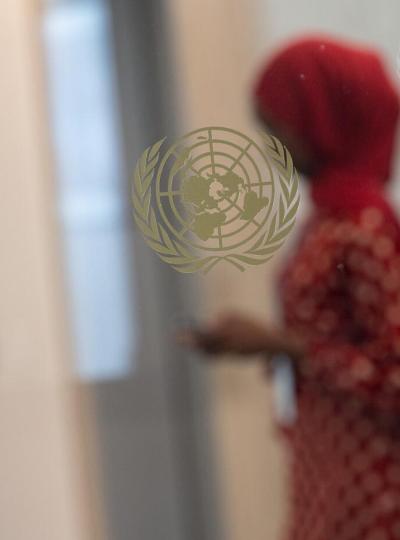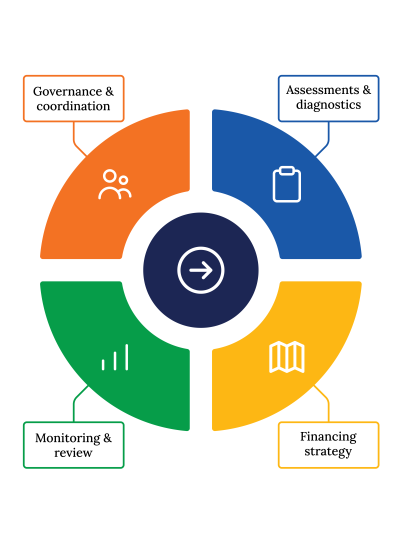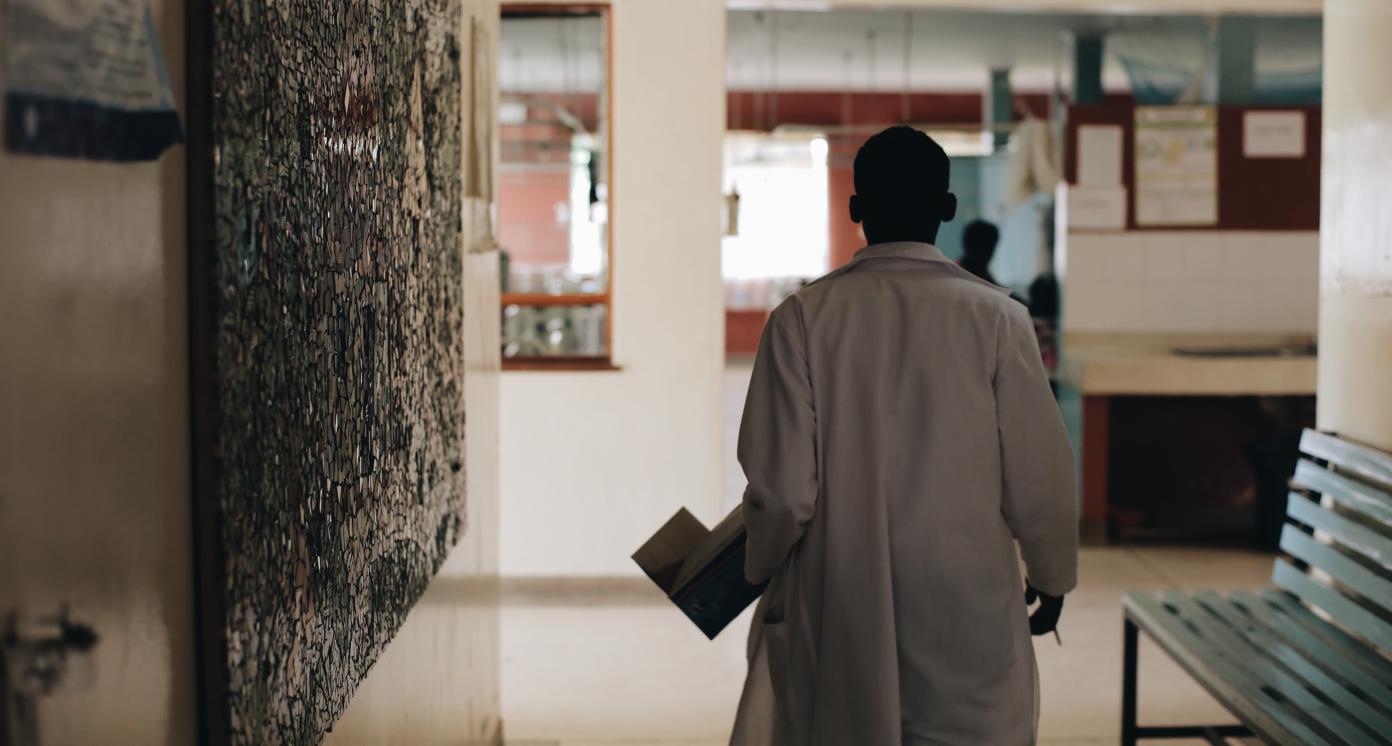High-Growth Potential Clinics
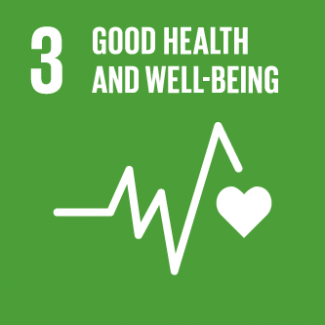
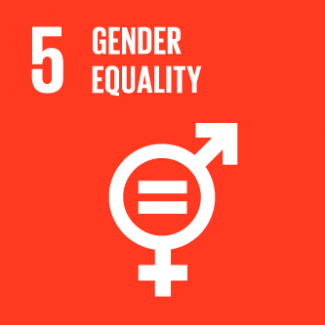
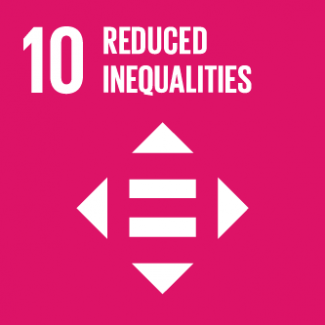
Business Model Description
Establish or acquire and operate clinics offering a variety of health services, either specialist disciplines or a wider range of basic medical services. Basic services can be covered by the Universal Health Insurance, allowing the clinics to target less well-off households. Clinics offering specialized services can target middle to higher-income segments. These clinics can develop into larger establishments, such as polyclinics.
Expected Impact
Expand access to health care services, covering prevention and treatment of essential and advances diseases.
How is this information gathered?
Investment opportunities with potential to contribute to sustainable development are based on country-level SDG Investor Maps.
Disclaimer
UNDP, the Private Finance for the SDGs, and their affiliates (collectively “UNDP”) do not seek or solicit investment for programmes, projects, or opportunities described on this site (collectively “Programmes”) or any other Programmes, and nothing on this page should constitute a solicitation for investment. The actors listed on this site are not partners of UNDP, and their inclusion should not be construed as an endorsement or recommendation by UNDP for any relationship or investment.
The descriptions on this page are provided for informational purposes only. Only companies and enterprises that appear under the case study tab have been validated and vetted through UNDP programmes such as the Growth Stage Impact Ventures (GSIV), Business Call to Action (BCtA), or through other UN agencies. Even then, under no circumstances should their appearance on this website be construed as an endorsement for any relationship or investment. UNDP assumes no liability for investment losses directly or indirectly resulting from recommendations made, implied, or inferred by its research. Likewise, UNDP assumes no claim to investment gains directly or indirectly resulting from trading profits, investment management, or advisory fees obtained by following investment recommendations made, implied, or inferred by its research.
Investment involves risk, and all investments should be made with the supervision of a professional investment manager or advisor. The materials on the website are not an offer to sell or a solicitation of an offer to buy any investment, security, or commodity, nor shall any security be offered or sold to any person, in any jurisdiction in which such offer would be unlawful under the securities laws of such jurisdiction.
Country & Regions
- Côte d'Ivoire: Vallée du Bandama
- Côte d'Ivoire: Sassandra-Marahoué
- Côte d'Ivoire: Bas-Sassandra
- Côte d'Ivoire: Savanes
Sector Classification
Health Care
Development need
Côte d'Ivoire is struck by several epidemics, including malaria, tuberculosis, and AIDS, resulting in a high child (below 5) mortality of 74 per 1000. The Universal health coverage (UHC) remains inoperant in several areas, as the UHC card usage rate was 7.96% in 2023 (1, 12, 13).
Policy priority
Aligned with the National Development Plan (2021-2025), the National Health Development Plan (PNDS) aims to halve infant and maternal mortality rates and increase the average life expectancy from 57 to 62 years by 2025. It plans to meet its objectives by building 376 new health establishments, including university hospitals and regional health centers, and rehabilitating existing facilities (2, 8, 11).
Gender inequalities and marginalization issues
Certain diseases, such as AIDS, disproportionately affect young women and female teenagers, increasing the risk of transmission to children. In Côte d'Ivoire, young women aged 15-24 are nearly twice as likely to be living with HIV compared to their male counterparts, with 2.7% of young women affected versus 1.4% of young men. The cost of health services and medicines impedes the treatment of vulnerable populations (3, 6).
Investment opportunities introduction
Côte d'Ivoire imports over 90% of its pharmaceutical consumption, indicating high potential for a domestic industry. In addition, the roll-out of the Universal Health Insurance and pledged increase in government health expenditures would lead to increased health affordability, thereby expanding the market (7, 12).
Key bottlenecks introduction
The governance of the health system faces challenges due to fragmented efforts and overlapping responsibilities across various levels. Additionally, limited enforcement of legislation can sometimes lead to inefficiencies (11).
Health Care Providers
Development need
In 2022, 28% of the population did not live within 5 km of a healthcare center. In addition the number of beds per habitant is low compared to the West Africa average, at 3.1 per 10,000 inhabitants in 2024, down from 3.4 in 2019 (4, 5, 9).
Policy priority
The National Health Development Plan aims to construct and equip a university hospital, 10 regional hospitals and 10 general hospitals. It also creates speciality centers across the country, partnering with local health centers for the fight against malaria and AIDS. In addition, the government aims to provide universal access to healthcare (6, 8).
Gender inequalities and marginalization issues
Côte d'Ivoire has a high rate of maternal deaths in Côte d'Ivoire, at 385 per 100,000 live births. This is partly caused by the lack of access to qualified staff and dispensaries, as the rate of births attended by skilled professionals was 84% in 2021. In addition, the UHC card is unevenly used between regions, with regions having usage rates as low as 1%. The health situation is considered critical in the Northern and Western regions (1, 4, 12, 13).
Investment opportunities introduction
The network of health providers is growing rapidly, with the number of first-contact health facilities rising from 2,023 in 2016 to 2,705 in 2019, a 25% increase over 3 years. In addition, 348 of these facilities have been built or rehabilitated in 2023, along with 20 hospitals. The implementation of the Universal Health Cover will have a significant impact on private clinics facilities as they generate 60% to 70% of their revenues from insurance or mutual insurance companies (8, 12, 14).
Key bottlenecks introduction
Despite the introduction of the Universal Health Cover, the system is not yet fully operational. As a result, the coverage of disadvantaged populations and reimbursement by the state may be insufficient in the short term, limiting the market size. Côte d'Ivoire also has a deficit of qualified health workers, with only 0.78 health providers and 0.18 physicians per 1,000 inhabitants (1, 4, 9).
Health Care Delivery
Pipeline Opportunity
High-Growth Potential Clinics
Establish or acquire and operate clinics offering a variety of health services, either specialist disciplines or a wider range of basic medical services. Basic services can be covered by the Universal Health Insurance, allowing the clinics to target less well-off households. Clinics offering specialized services can target middle to higher-income segments. These clinics can develop into larger establishments, such as polyclinics.
Business Case
Market Size and Environment
USD 100 million - USD 1 billion
The measurable growth prospects for the high-growth potential clinics in Côte d’Ivoire indicate a market size of USD 50-100 million, although the figure could be much larger as 70% of private clinics operate illegally, without government authorization (46).
Indicative Return
Net Profit Margin: 10-15%
Case studies in the Western African region indicate a net profit margin of 10 to 14% for growing private healthcare establishments (15).
Investment Timeframe
Long Term (10+ years)
Empirical data on investments in emerging market show that the payback period is six to nine years for tertiary hospitals. Given high discount rates in West Africa, longer payback periods over 10 years are warranted (54, 55).
Ticket Size
> USD 10 million
Market Risks & Scale Obstacles
Market - High Level of Competition
Market - Highly Regulated
Business - Supply Chain Constraints
Impact Case
Sustainable Development Need
The Ivorian population is highly vulnerable to infectious diseases such as malaria, tuberculosis, and AIDS, with 16 million cases of malaria reported annually and an AIDS prevalence of 2.1%, one of the highest in West Africa (47).
28% of the population lived more than 5 kilometres away from a public health establishment in 2022, limiting access to health (5).
With 37.5% of the Ivorian population living below the national poverty line, affordability of healthcare is a key challenge in Côte d'Ivoire, especially if it involves transportation costs in addition to medical expenses (48).
With 3.1 beds per 10,000 inhabitants, Côte d'Ivoire lags behind countries such as Ghana (9 beds), hindering patient access to medical care (5, 45).
Gender & Marginalisation
Empirical studies found that women have lower revenues and health cover, which impedes their access to healthcare, especially when health centers are located far from their home (15).
Over two-thirds of women have difficulty accessing maternal health services due to a lack of financial resources (4).
Expected Development Outcome
The opening of new clinics helps to combat epidemics by providing rapid prevention and treatment services, which limit the spread of diseases and reduce mortality rates (53).
The opening of new clinics would contribute to solving the accessibility gap in access to health services (52).
The opening of new clinics approved for universal health coverage will help lower healthcare costs for the most vulnerable populations.
The opening of new clinics would increase bed capacity, allowing for the treatment of more patients and reducing waiting times.
Gender & Marginalisation
The commissioning of new clinics, particularly with specialized gynaecology, maternity and obstetrics care, will help reduce gender inequalities in access to health services.
Increasing the number of health facilities will lower transport costs, thereby benefitting the most vulnerable populations, including women.
Primary SDGs addressed

3.1.2 Proportion of births attended by skilled health personnel
3.2.2 Neonatal mortality rate
3.8.1 Coverage of essential health services
3.c.1 Health worker density and distribution
In 2020, the proportion of births attended by skilled health personnel was 71.56% (2).
The neonatal mortality rate was 29 per 1000 live births in 2022 (17).
The universal health coverage service index for Côte d'Ivoire was 41% in 2019 (21).
In 2020, Côte d'Ivoire has a density of health workers of 1.4 doctor per 10,000 inhabitants, and 8.57 doctors, nurses, and midwives per 10,000 inhabitants (2).
The National Health Development Plan 2021-2025 sets the objective of a proportion of births attended by skilled health personnel of 81.8% by 2025 (2).
The National Health Development Plan 2021-2025 indicates the objective to reach a neonatal mortality rate below 22.5 per 1,000 live births by 2025 (2).
The National Health Development Plan 2021-2025 aims to increase the number of health centers and clinics covered by the Universal Health Coverage to 80% by 2025 (2).
The National Health Development Plan 2021-2025 targets 1 doctor per 10,000 inhabitants in all districts and 23 health workers (doctors, nurses, midwives) per 10,000 inhabitants as per WHO recommendations (2, 39).
Secondary SDGs addressed


Directly impacted stakeholders
People
Gender inequality and/or marginalization
Corporates
Public sector
Indirectly impacted stakeholders
People
Gender inequality and/or marginalization
Corporates
Public sector
Outcome Risks
Increased medical waste and resource consumption (water, energy) from expanded healthcare services could lead to environmental degradation if not properly managed.
Poor management of medical waste (e.g., syringes, chemicals) could lead to environmental harm, such as water or soil contamination.
The growth of private clinics can drive up healthcare costs by focusing on profitable services like elective procedures over essential or preventive care, increasing expenses for Universal Health Coverage reimbursements.
Private clinics may attract skilled healthcare professionals away from public hospitals with better salaries and working conditions, leading to a shortage of qualified staff in the public sector.
Impact Risks
If the clinics face operational issues, such as inability to recruit qualified personnel, especially if located in rural areas and far from medical schools, the impact on access to healthcare may be smaller than expected.
Poor transportation and logistics infrastructure can delay the supply of essential medical supplies, either from local manufacturing plants or through imports, affecting clinic operations and patient care.
If the establishment of clinics is limited to large cities, the effect on health inequalities could be limited.
If clinics are insufficiently covered by the Universal Health Coverage, either due to extended registration times or regulatory delays, the impact may be limited to privileged patients.
Gender inequality and/or marginalization risk: If a system of price controls or incentive mechanisms is not established, clinics may primarily service higher-income individuals or urban populations, leading to unequal access.
Impact Classification
What
Investments in new private clinics would contribute to expand access to health, increasing the number of hospital beds in the country.
Who
The opening of new centers would benefit the population, particularly young women and children, who are more vulnerable and affected by epidemics.
Risk
The main risks include operational challenges, poor logistics, urban bias, limited Universal Health Coverage, and insufficient mechanisms to address gender inequality and marginalization, all of which could restrict equitable access to healthcare.
Contribution
Private hospitals and clinics complement the public offer while relieving congestion in public hospitals, proving additionality.
How Much
The government aims to ensure that all 80% of the population live less than 5 kilometres away from a health center by 2025, and 100% over the long-term, against 72% in 2024 (2, 5).
Impact Thesis
Expand access to health care services, covering prevention and treatment of essential and advances diseases.
Enabling Environment
Policy Environment
The National Health Development Plan 2021-2025 outlines initiatives to improve health and reduce maternal and infant mortality. These include the construction of health facilities and increased training of healthcare workers (2).
The National Development Plan 2021-2025 outlines the government's health strategy, including increasing the number of health centers, improving service quality, and enhancing maternal and child health (11).
The National Strategic Plan for the Integration and Development of the Private Health Sector 2021-2025 (Plan Stratégique National d'Intégration et de Développement du Secteur Privé de la Santé or PSN-IDSP) aims to improve the healthcare system in Côte d'Ivoire by strengthening the governance of the private health sector, improving access to healthcare services, notably by encouraging the establishment of private clinics, and promoting public-private partnerships (22).
Financial Environment
Financial incentives: Following the 2014 Law establishing universal health coverage, the UHC covers 70% of the insured's health expenses, which will increase demand for private clinics by allowing lower-income individuals to get treated in private institutions (44).
Other incentives: The International Finance Corporation (IFC) has been involved in structuring Public-Private Partnerships (PPP) for affordable healthcare services, including diagnostic and laboratory facilities in 14 hospitals (27).
Other incentives: Proparco, a development bank, provides loans to companies in the healthcare sector (particularly clinics and imaging centers), with a minimum amount of 10 million euros (USD 10.8 million) (49).
Other incentives: The International Finance Corporation's Medical Equipment Access Program helps healthcare SMEs in East and West Africa secure local currency loans for essential equipment. With USD 300 million in financing, it uses risk-sharing with financial institutions and manufacturers, while offering technical assistance to improve financial management and equipment acquisition (58).
Regulatory Environment
Decree No. 96-877 (1996) "Concerning the classification, definition, and organization of private healthcare facilities" details the classification and regulations applicable to the establishment of private health centers (42).
Loi n° 2019-677 "guiding public health policy in Côte d'Ivoire" acts as a new public health code. Article 73 indicates that the government promotes the private health sector, and that the creation and operation of health centers is subject to regulations (41).
Decree No. 2013-792 requires public primary care establishments in Côte d'Ivoire to source all medicines through the state-controlled Nouvelle Pharmacie de Santé Publique. It aims to centralize the procurement and distribution of medicines and strategic inputs to ensure accessibility (24).
Order No. 316/MSHP/CAB was issued in December 2020 by the Ministry of Health, Public Hygiene and Universal Health Coverage to prohibit private health establishments without operating rooms from conducting deliveries (39).
Law No. 2014-131 institutes the Universal Health Coverage and outlines its terms of application (43).
Marketplace Participants
Private Sector
Novamed, Association des Cliniques Privées de Cote d'Ivoire, Confédération Générale des Entreprises de Côte d’Ivoire (CGECI), Nouvelle Clinique Farah, Polyclinique internationale Sainte-Anne-Marie (Pisam), Clinique Notre Dame de l'Incarnation.
Government
Centre de Promotion des Investissements en Côte d’Ivoire (CEPICI), Ministry of Health and Public Hygiene, Ministry of Economy, Ministry of the Economy, Planning and Development, Nouvelle Pharmacie de Santé Publique.
Multilaterals
Joint United Nations Programme on HIV/AIDS (UNAIDS), International Finance Corporation (IFC).
Non-Profit
Santé Espoir Vie – Côte d'Ivoire (SEV-CI), Proparco.
Target Locations
Côte d'Ivoire: Vallée du Bandama
Côte d'Ivoire: Sassandra-Marahoué
Côte d'Ivoire: Bas-Sassandra
Côte d'Ivoire: Savanes
References
- (1) Ministry of Planning and Development. 2022. Deuxième Rapport National Volontaire de la Côte d'Ivoire. https://hlpf.un.org/sites/default/files/vnrs/2022/VNR%202022%20Cote%20dIvoire%20Report_0.pdf
- (2) UCP-Santé. 2020. Plan National de Développement Sanitaire 2021-2025. https://www.ucpsante-bm.org/index.php?option=com_content&view=article&id=64&catid=73&Itemid=302&lang=fr#:~:text=%C3%A0%20l%27horizon%202025%2C%20il,une%20approche%20des%20P%C3%B4les%20de
- (3) UNAID. 2021. Cinq questions sur la riposte au VIH en Côte d’Ivoire. https://www.unaids.org/fr/keywords/cote-divoire#:~:text=La%20C%C3%B4te%20d%27Ivoire%20a,baiss%C3%A9%20de%20plus%20de%20moiti%C3%A9.
- (4) Global Financing Facility. 2020. Financement de la santé - Dossier d'investissement 2020-2023. https://www.globalfinancingfacility.org/sites/gff_new/files/documents/Cote-dIvoire-Investment-Case_Resume-fr.pdf
- (5) Gouvernement de Côte d'Ivoire. 2022. Santé : 72% de la population vivent à moins de 5km d'un centre de santé en 2022, contre 44% en 2012. https://www.gouv.ci/_actualite-article.php?recordID=14326&d=3
- (6) UNAIDS. 2023. Une évaluation des enveloppes pays de l'ONUSIDA. 2018-2022. Etude de cas pays - Côte d'Ivoire. https://www.unaids.org/sites/default/files/media/documents/evaluation-country-envelopes-2018-2022-case-study-cotedivoire_fr.pdf
- (7) Sciences Po. 2024. Le droit à la santé en Côte d'Ivoire. https://www.sciencespo.fr/ecole-droit/sites/sciencespo.fr.ecole-droit/files/Rapport_sante_SCPO&HumanDignity.pdf
- (8) WHO. 2022. Rapport biennal 2020-2021. OMS Côte d'Ivoire. https://www.afro.who.int/sites/default/files/2022-07/exe%20RA%20Biennal%20OMS%2007%20juillet%20print.pdf
- (9) Statista. 2024. Health Indicators - Ivory Coast. https://www.statista.com/outlook/co/health-indicators/ivory-coast
- (10) Global Initiative for Economic, Social & Cultural Rights. 2024. Rapport de recherche - L'accès aux soins de santé en Côte d'Ivoire : Enseignements d'une recherche - action participative à Gagnoa. https://gi-escr.org/fr/ressources/publications/acces-aux-soins-de-sante-en-cote-divoire-une-recherche-action-participative
- (11) Gouvernement de la Côte d'Ivoire. 2021. Plan National de Développement PND 2021-2025. https://dcf.ci/dcf.ci/wp-content/uploads/2021/09/PND-2021-2025_Tome-1_Diagnostic-strate%CC%81gique.pdf
- (12) WHO. 2024. Vers le renforcement d’un appui concerté et optimisé des partenaires techniques et financiers dans la mise en œuvre de la CMU en Côte d’Ivoire. https://www.afro.who.int/fr/countries/cote-divoire/news/vers-le-renforcement-dun-appui-concerte-et-optimise-des-partenaires-techniques-et-financiers-dans-la
- (13) Ministère de l'Economie, du Plan et du Développement. 2023. Plan National de Développement 2021-2025. Rapport Annuel 2023.
- (14) Business France. 2021. En Côte d’Ivoire, la Santé est au cœur des priorités gouvernementales. https://www.businessfrance.fr/En_Cote_d_Ivoire_la_Sante_est_au_c%C5%93ur_des_priorites_gouvernementales
- (15) International Finance Corporation (IFC). 2008. Investir dans la santé en Afrique. https://documents1.worldbank.org/curated/en/302121467990315371/pdf/441430WP0FRENC1AN10110200801PUBLIC1.pdf
- (16) Sackou-Kouakou, J., Kouamé, J., Tiadé, M., Desquith, A., Dagnogo, A., Hounsa-Alla, A .. & Kouadio, K. 2021. Renoncement aux soins pour raisons financières des femmes d’un quartier périurbain d’Abidjan en Côte d’Ivoire. Santé Publique, 33, 285-293. https://doi.org/10.3917/spub.212.0285
- (17) World Bank. [undated]. Mortality rate, neonatal (per 1,000 live births) - Cote d'Ivoire https://data.worldbank.org/indicator/SH.DYN.NMRT?locations=CI
- (18) World Bank. 2024. Unemployment, total (% of total labor force) (national estimate) - Cote d'Ivoire. https://data.worldbank.org/indicator/SL.UEM.TOTL.NE.ZS?locations=CI
- (19) Jeune Afrique. 2017. Côte d’Ivoire : la polyclinique Farah joue dans la cour des grands. https://www.jeuneafrique.com/mag/474892/economie-entreprises/cote-divoire-la-polyclinique-farah-joue-dans-la-cour-des-grands/
- (20) Jeune Afrique. 2021. Côte d’Ivoire : les cliniques privées rivalisent d’investissements. https://www.jeuneafrique.com/1261845/economie-entreprises/cote-divoire-les-cliniques-privees-rivalisent-dinvestissements/
- (21) World Bank. [Undated]. SDG 3.8.1 Coverage of essential health services. https://databank.worldbank.org/embed/SDG-3.8.1-Coverage-of-essential-health-services/id/f609d4b
- (22) République de Côte d'Ivoire. 2021. Plan Stratégique National d'Intégration et de Développement du Secteur Privé de la Santé en Côte d'Ivoire 2021-2025. https://www.depps.sante.gouv.ci/DocPDF/DOCUMENTS%20DE%20R%C3%89F%C3%89RENCE/PLAN%20STRATEGIQUE%20NATIONAL%20IDSPS.pdf
- (23) Team France Export. 2024. Le Marché des médicaments et biotechs en Côte-d'Ivoire. https://www.teamfrance-export.fr/fiche-marche/sante/medicaments-et-biotechs/CI "24) Présidence de la République. 2013. DECRET n° 2013-792 du 20 Novembre 2013 portant approbation de la convention entre l'Etat et la Nouvelle Pharmacie de la Santé publique de Côte d'Ivoire relative à l'approvisionnement et à la distribution de médicaments essentiels et intrants stratégiques de laboratoire. https://www.juriafrica.com/lex/decret-2013-792-20-novembre-2013-30957.htm "
- (25) République de Côte d'Ivoire. 2019. Loi No. 2019-677 du 23 juillet 2019 portant orientation de la politique de santé publique de Côte d'Ivoire. https://www.sante.gouv.ci/assets/fichiers/loi-n-2019-677-du-23-juillet-2019-portant-orientation-de-la-poliotique-de-sante-publique-en-ci.pdf
- (26) Gouvernement de Côte d'Ivoire. 2018. RENFORCEMENT DU SYSTEME SANITAIRE : LA COTE D’IVOIRE LANCE UN NOUVEAU CODE. https://www.gouv.ci/_actualite-article.php?recordID=8501#:~:text=%C2%AB%20Ce%20nouveau%20code%20de%20la,a%20d%C3%A9clar%C3%A9%20Raymonde%20Goudou%20Coffie.
- (27) IFC. 2024. IFC and Côte d’Ivoire Partner to Expand Access to Affordable, High-Quality Healthcare Through Public-Private Partnerships. https://www.ifc.org/en/pressroom/2024/ifc-and-cote-d-ivoire-partner-to-expand-access-to-affordable-hig
- (28) Groupe Pisam. Pisam en bref. https://www.groupepisam.com/pisam-en-bref/
- (29) Gouvernement de Côte d'Ivoire. 2024. SANTÉ : LA COTE D’IVOIRE COMPTE 1 MEDECIN POUR 5 697 HABITANTS A FIN 2023. https://www.gouv.ci/_actualite-article.php?recordID=16871#:~:text=Au%20niveau%20du%20personnel%20param%C3%A9dical,femmes%20en%20%C3%A2ge%20de%20procr%C3%A9er.
- (30) RAD-AID. 2020. Côte d’Ivoire Country Report. https://rad-aid.org/wp-content/uploads/IvoryCoast-CR.pdf
- (31) France 24. 2023. En Côte d'Ivoire, une lutte sans fin contre les cliniques illégales. https://www.france24.com/fr/afrique/20230425-en-c%C3%B4te-d-ivoire-une-lutte-sans-fin-contre-les-cliniques-ill%C3%A9gales
- (32) UNICEF. 2020. Moving faster towards high-quality universal health coverage in 2020–2025 by ending preventable newborn deaths and stillbirths. https://www.unicef.org/media/77166/file/Ending-preventable-newborn-deaths-and-stillbirths-by-2030-universal-health-coverage-in-2020%202025.pdf
- (33) SDG Transformation Center. 2024. Sustainable Development Report. https://dashboards.sdgindex.org/map/indicators/universal-health-coverage-uhc-index-of-service-coverage
- (34) SDG Transformation Center. 2024. Sustainable Development Report. https://dashboards.sdgindex.org/map/indicators/births-attended-by-skilled-health-personnel
- (35) SDG Transformation Center. 2024. Sustainable Development Report. https://dashboards.sdgindex.org/map/indicators/unemployment-rate
- (36) République de Côte d'Ivoire. 2023. Politique Pharmaceutique Nationale. https://dap.ci/wp-content/uploads/2023/11/PPN-Version-02.10.2023-DAP.pdf
- (37) Clinique Notre Dame de l'Incarnation. 2022. [Homepage]. https://www.cliniquendi.com/
- (38) FratMat. 2022. Pour son 15è anniversaire: Une clinique choisit d’honorer ses premiers patients et agents. https://www.fratmat.info/article/225139/societe/sante/pour-son-15e-anniversaire-une-clinique-choisit-dhonorer-ses-premiers-patients-et-agents
- (39) Gouvernement de Côte d'Ivoire. 2024. Dispositif sanitaire et qualité des soins : le gouvernement Ivoirien vise : "zéro clinique illégale d'ici 2025". https://www.gouv.ci/_actualite-article.php?recordID=16626
- (40) Ministère de la Santé, de l'Hygiène Publique et de la Couverture Maladie Universelle. 2024. Opération Zéro "clinique" illégale d'ici à 2025. https://www.depps.sante.gouv.ci/Home/ZeroClinique
- (41) République de Côte d'Ivoire. 2019. Loi No. 2019-677 du 23 juillet 2019 portant orientation de la politique de santé publique de Côte d'Ivoire. https://www.sante.gouv.ci/assets/fichiers/loi-n-2019-677-du-23-juillet-2019-portant-orientation-de-la-poliotique-de-sante-publique-en-ci.pdf
- (42) Président de la République de Côte d'Ivoire. 1996. Décret N°96-877 du 25 Octobre 1996 portant classification définition et organisation des établissements sanitaires prives. https://www.depps.sante.gouv.ci/DocPDF/ETABLISSEMENTS/DECRET%20N%C2%B0%2096-877%20DU%2025%20OCTOBRE%201996%20PORTANT%20CLASSIFICATION%20DEFINITION%20ET%20ORGANISATION%20DES%20ETABLISSEMENTS%20SANITAIRES%20PRIVES.pdf
- (43) Gouvernement de Côte d'Ivoire. 2014. Loi N°2014-131 du 24 mars 2014 instituant la CMU. https://ipscnam.ci/wp-content/uploads/2023/09/Loi-N%C2%B02014-131-dinstituant-la-Couverture-Maladie-Universelle.pdf
- (44) Cabinet du Premier Ministre de Côte d'Ivoire. 2019. Couverture maladie universelle (CMU) : les assurés paieront 30% du montant des tarifs des actes couverts. https://www.primature.ci/actualite/?pm=10135
- (45) GiZ. [undated]. Patnership Ready - Côte d'Ivoire - Le secteur de la santé. https://www.giz.de/en/downloads/gbn-fr-sante-cote.pdf
- (46) CDC Investment Works. 2020. Opportunités d’investissement dans le secteur privé de la santé en Côte d’Ivoire et au Sénégal. https://assets.cdcgroup.com/wp-content/uploads/2020/09/22105748/Opportunities-for-investment-in-the-private-health-sector_French.pdf
- (47) Oxford Business Group. 2022. How is Côte d’Ivoire health care system expanding coverage. https://oxfordbusinessgroup.com/reports/cote-divoire/2022-report/economy/prioritising-recovery-expanding-infrastructure-coverage-and-technologies-to-rebuild-and-strengthen-the-health-care-system
- (48) World Bank. 2024. Ratio de la population pauvre en fonction du seuil de pauvreté national (% de la population) - Cote d'Ivoire. https://donnees.banquemondiale.org/indicateur/SI.POV.NAHC?locations=CI
- (49) Consultation. 2023. UNDP SDG Investor Map project team consultation with a development bank, december 2023.
- (50) Afrobaromètre. 2018. La santé, un service de base difficilement accessible aux Ivoiriens économiquement faibles. https://www.afrobarometer.org/wp-content/uploads/2022/02/ab_r7_dispatchno233_la_sante_en_cote_divoire.pdf
- (51) Institut National de la Statistique. 2021. Enquête Démographique et de Santé 2021. https://dhsprogram.com/pubs/pdf/PR140/PR140.pdf
- (52) Armand, F. et al. 2017. Évaluation du secteur privé de la santé de la Côte d’Ivoire : Planification familiale. https://healthmarketlinks.org/sites/default/files/resources/%C3%89valuation%20du%20secteur%20priv%C3%A9%20de%20la%20sant%C3%A9%20de%20la%20C%C3%B4te%20d%E2%80%99Ivoire%20Planification%20familiale_0_0.pdf
- (53) Ministry of Health of Côte d'Ivoire. 2023. Rapport final - Cartographie des établissements sanitaires privés en Côte d’Ivoire. https://www.depps.sante.gouv.ci/DocPDF/DOCUMENTS%20DE%20R%C3%89F%C3%89RENCE/RAPPORT%20CARTOGRAPHIE%20ESPr%20IQVIA%20-%20BM_DEPPS.pdf
- (54) Business Standard. 2013. Speciality health care offers higher returns, faster payback: Avnish Bajaj. https://www.business-standard.com/article/companies/speciality-health-care-offers-higher-returns-faster-payback-avnish-bajaj-113102300544_1.html
- (55) Nurakmaliyah, L. et al. 2022. Analysis of Financial Investment Business Plan Clinic "Bersama". https://www.aijbm.com/wp-content/uploads/2022/06/I569296.pdf
- (56) Le Monde. 2024. En Côte d’Ivoire, le gouvernement veut assainir le secteur des cliniques privées illégales. https://www.lemonde.fr/afrique/article/2024/10/29/en-cote-d-ivoire-le-gouvernement-veut-assainir-le-secteur-des-cliniques-privees-illegales_6365564_3212.html#:~:text=Selon%20les%20estimations%20du%20gouvernement,ivoiriennes%20exercent%20dans%20l%27ill%C3%A9galit%C3%A9.
- (57) Team France Export. 2024. Le Marché des dispositifs médicaux en Côte-d'Ivoire. https://www.teamfrance-export.fr/fiche-marche/sante/dispositifs-medicaux/CI
- (58) IFC. Financement d’IFC pour améliorer l’accès aux équipements médicaux essentiels. https://www.ifc.org/en/what-we-do/sector-expertise/health/enhancing-diagnosis-and-treatment-capacity/equipements-medicaux-en-afrique-difc#:~:text=Le%20Programme%20devrait%20permettre%20de,financement%20dans%20un%20march%C3%A9%20fragment%C3%A9.
- (59) Boidin, B. and M. Chavassieux. 2022. Capitalisme et santé au Sud : la finance mixte au cœur de la financiarisation de l’aide au développement. https://journals.openedition.org/ei/7463#:~:text=Par%20exemple%20l%27Africa%20Health,%25%20(AVCA%2C%202018).
- (60) Fratmat. 2021. Monographie succincte: La Vallée du Bandama, un district en pleine mutation. https://www.fratmat.info/article/217183/politique/monographie-succincte-la-vallee-du-bandama-un-district-en-pleine-mutation
- (61) Agence Ivoirienne de Presse. 2024. Côte d’Ivoire-AIP/Des acteurs privés de santé instruits sur un projet d’acquisition d’équipements médicaux pour des soins de qualité. https://www.aip.ci/39582/cote-divoire-aip-des-acteurs-prives-de-sante-instruits-sur-un-projet-dacquisition-dequipements-medicaux-pour-des-soins-de-qualite/


